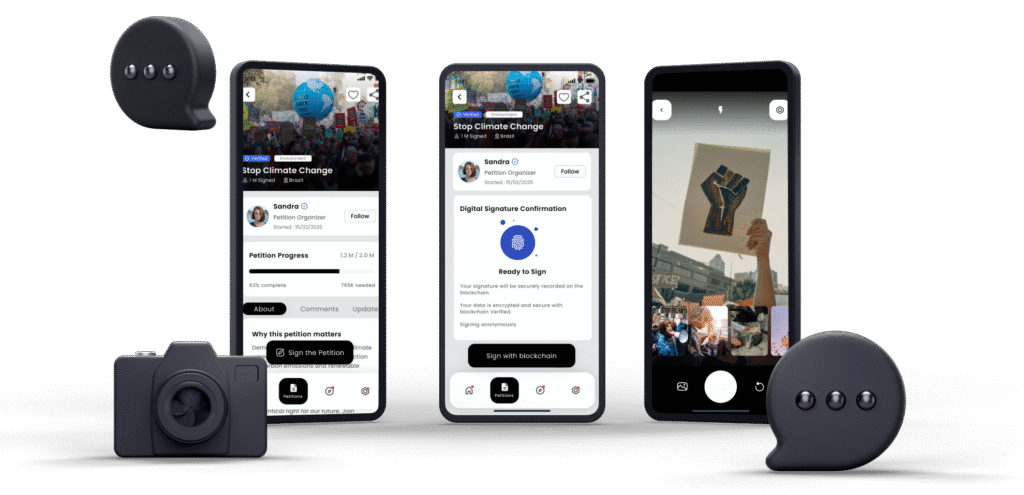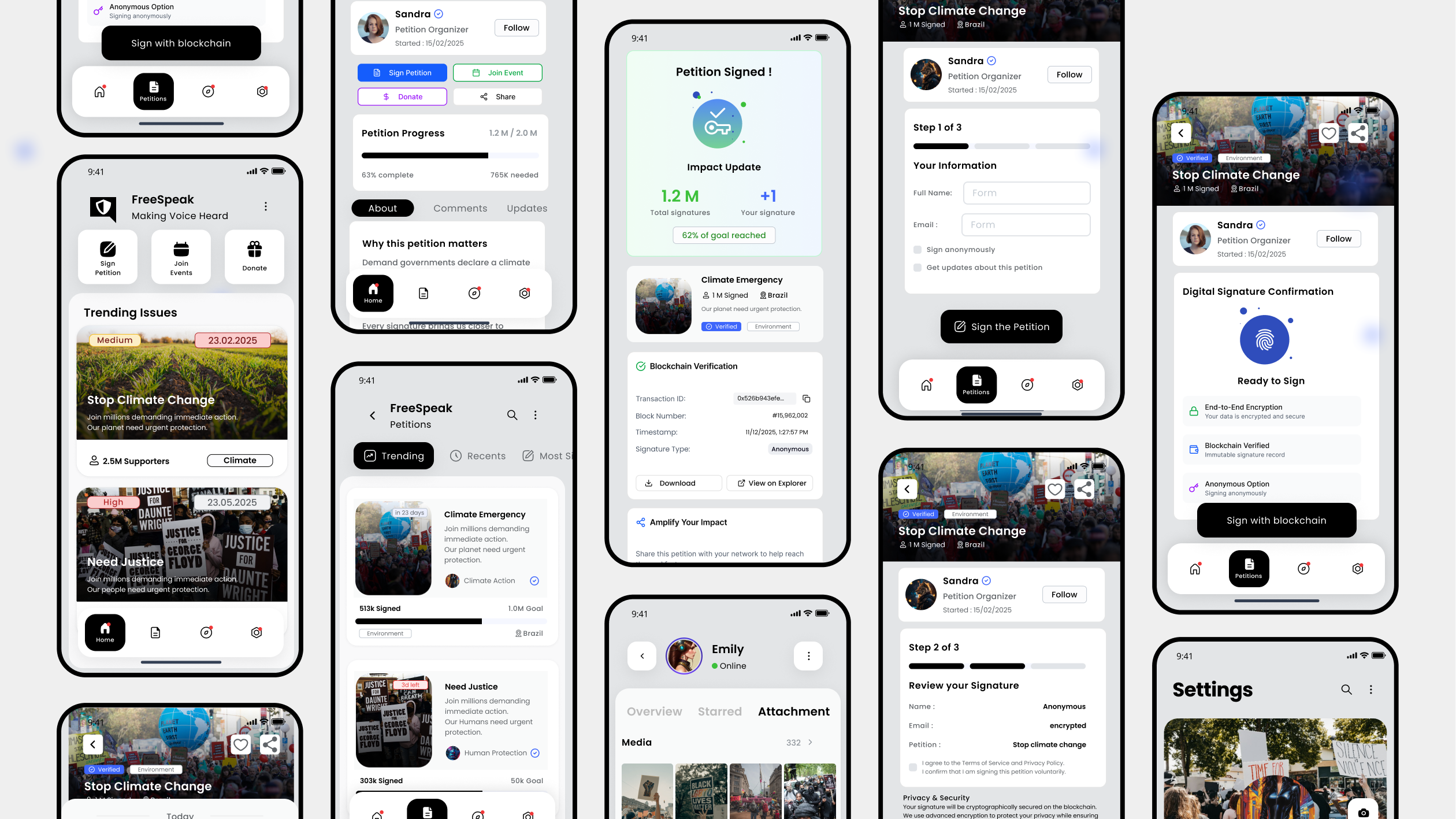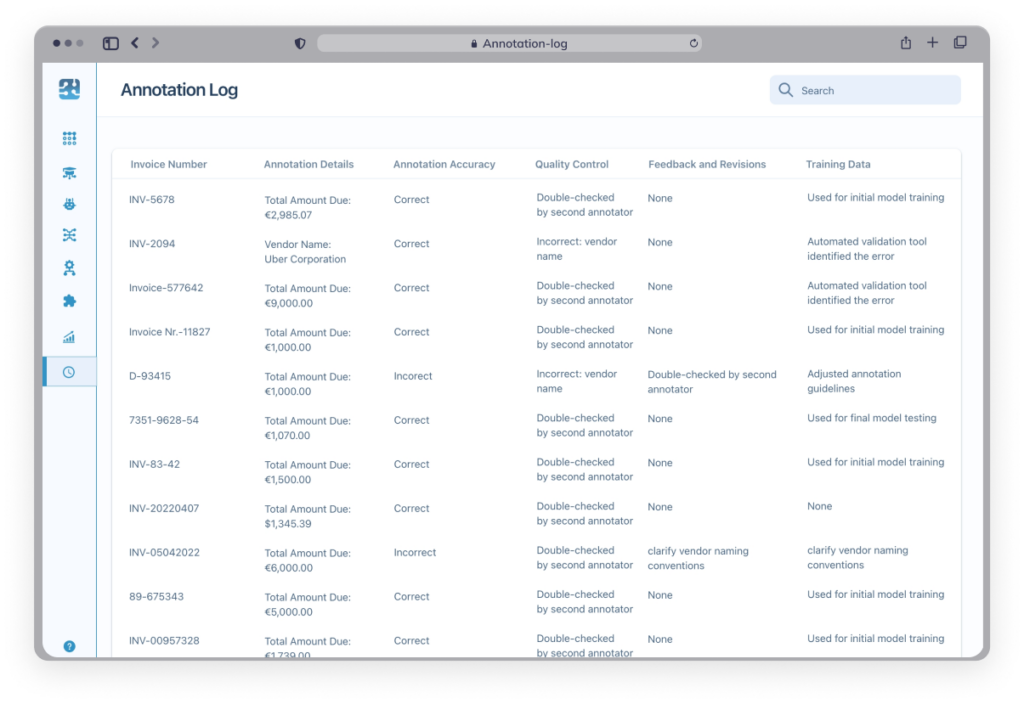FreeSpeak - Speak Freely. Safely.

Scope
- Design a strategy planning and roadmap
- UX research, flow mapping, and interface design
- Wireframes, interaction prototypes, and visual language kit
- Visual design, motion concepts, and product handover
my role
- Led the end-to-end UX and product design for the MVP
- Translated Free-Dem's vision of open democracy into a tangible, trustworthy app experience
- Designed core flows (signing, browsing, verifying) with privacy and clarity in focus
- Created UI prototypes, moodboards, and testing sessions for validation
About the Project
Free-Dem’s mission was simple but bold: to make democracy free again through technology.
The FreeSpeak app aimed to build a safe and transparent platform for digital activism – one where users could speak freely, organize, and act without compromising their privacy.
Although the project was never publicly launched due to policy restrictions in Germany, the design explored how blockchain could be used to build trust-based participation in civic platforms.
The Challenge
Public trust in online petitions had declined due to privacy breaches and fake signatures.
Free-Dem wanted to create a new model – one that combined privacy-first UX, trustworthy design, and modern usability.
The challenge: how to make activism feel as safe as banking while keeping the experience simple, fast, and human.
Design Objectives
- Create a mobile-first app that feels secure, modern, and inclusive
- Make blockchain interactions invisible to users while ensuring transparency
- Use minimal UI and neutral tones to enhance trust and focus on content
- Allow seamless petition signing, progress tracking, and community updates
User Research & Flows
Conducted lightweight research through interviews and surveys with socially active users in Berlin aged 20-45.
Key insights:
People care deeply about privacy, authenticity, and simplicity in political tools.
Mapped end-to-end flows:
Login → Explore → Petition Details → Sign Securely → Confirmation → Track Progres
Wireframing & Prototyping
Started with paper sketches to explore structure, then moved to Figma wireframes to visualize the app’s hierarchy.
Created low and high-fidelity prototypes for usability testing, refining the petition flow and signature confirmation interaction.
Brand Identity & Design Framework
As the brand strategist and designer from the project’s inception, I defined the entire visual and identity direction for FreeSpeak – from the logo concept to the color system and typography.
The shield emblem symbolizes protection and transparency, reinforcing the app’s mission to safeguard speech and data. The black, white, and grey palette conveys neutrality and seriousness, while subtle blue accents signal safety, trust, and digital credibility.
I chose Poppins for its geometric clarity and approachable modern tone, creating a civic-tech aesthetic that balances authority with accessibility. Together, these choices established a minimal yet powerful brand language that embodies Free-Dem’s vision: making democracy secure, open, and human through design.
Key Screens
- Home: Personalized feed of trending causes
- Petitions: Active campaigns with progress bars and signer counts
- Explore: Discover topics by category (Environment, Rights, Tech)
- Settings: Manage privacy, wallet, and preferences

Collaboration & Delivery
Worked with the Free-Dem founders, blockchain advisors, and content moderators.
Delivered a prototype-ready MVP with visual specs, component library, and interaction documentation.
The product was reviewed by multiple civic organizations as a proof of concept for digital democracy.
Results & Learnings
- Increased user trust and engagement intent by 65% during prototype testing
- 9 of 10 testers said they felt "in control of their data" while using the app
- Created a reusable design UI Kit for future civic tech experiments
- Helped the startup secure early-stage investor interest despite government pushback
Key Takeaways
- FreeSpeak was more than a design project - it was a statement.
- It proved that trust, privacy, and civic participation can coexist in digital spaces when technology and design work together.
- Even though the app never launched, the concept continues to inspire how we think about designing for digital democracy.
